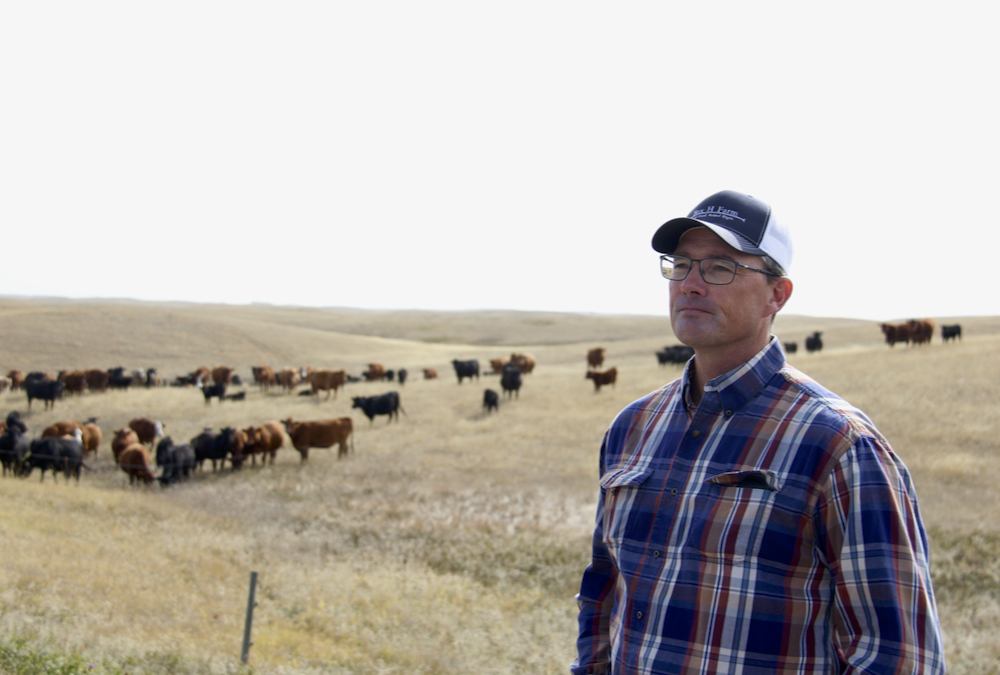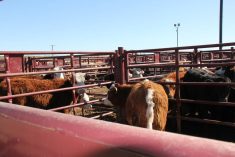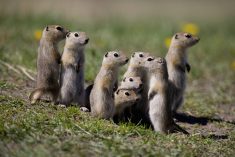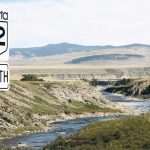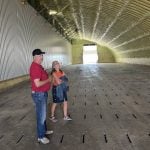It’s a September afternoon when a large charter bus coasts down the back roads near Gladmar, Sask. The hills roll like waves, and the bus rolls with them, inducing nausea.
Before long, the bus slows, then stops. Farm journalists and communicators, part of the Canadian Farm Writers’ Federation annual conference, file off the bus and stand on the gravel road in the hill’s dip, cameras around their necks and notepads in hand. In an adjacent pasture are the cattle of Box H Ranch, run by Mark and Laura Hoimyr. Here, they run 250 cow-calf pairs. Mark and Laura speak into a microphone, over the hum of the wind, telling the group about their operation.
“I don’t know if anyone noticed the hills when we were driving,” Mark says with a laugh.
Read Also
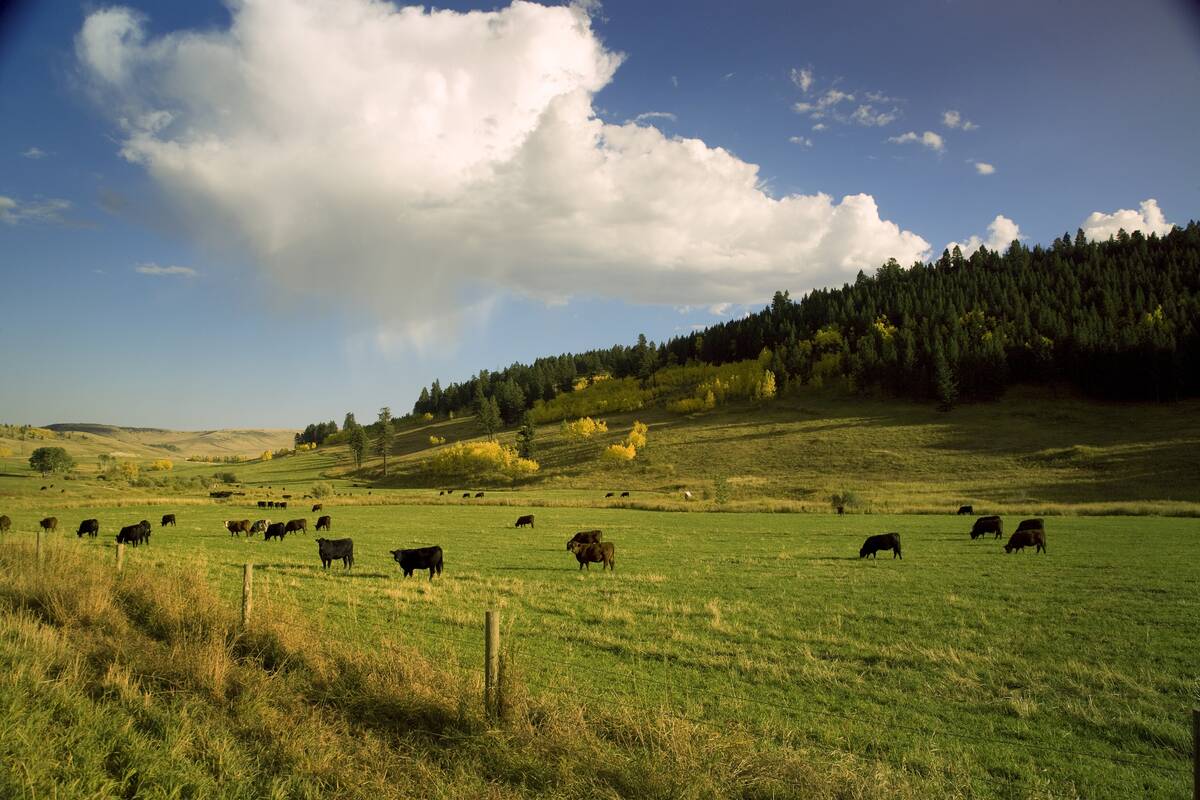
The Canadian Cattle Association’s international advocacy efforts
Global ag policies affect Canadian food policy, so the Canadian Cattle Association participates in international and domestic forums
“This land is really well suited to perennials, something that can keep the ground covered all year long. So we started to move in that direction.”
Box H Ranch
Box H Ranch was started in the early 2000s when Mark and Laura returned to begin their operation just down the road from Mark’s parents. They slowly converted all their cropland into pasture land and now strictly raise animals. They manage about 5,500 acres. Alongside their cattle herd, the Hoimyrs also have pigs and bees. In 2017, they won the Environmental Stewardship Award.
After years of ranching, the Hoimyrs slowly started to change how they graze on their operation. Previously, they did a take-half, leave-half grazing method, meaning one moves the cattle before they’ve grazed more than half the plant material. But the Hoimyrs began the switch to what Mark refers to as “severe” grazing around a year ago.
“What we found is that depending on the way the growing season was going or the time of the year, that we were grazing some of the grass, there wasn’t really any recovery happening in that season, regardless of how much we left behind,” Mark says.
By switching to severe grazing, a method of rotational grazing where cattle take more plant material, they were able to increase their rest period. An Alberta Agriculture fact sheet notes that severe grazing can improve pastures by removing and trampling old and undesirable plant material, as long as the plants receive sufficient rest.
“This allowed us to stretch out that recovery period and make certain that the plants get to have enough time to recover. And that was another concern with the faster rotation and coming back more often is that it was in certain instances favouring the plants that didn’t necessarily respond that quickly and didn’t regrow. And it was the ones that were going faster that were actually taking the brunt of the grazing pressure.”
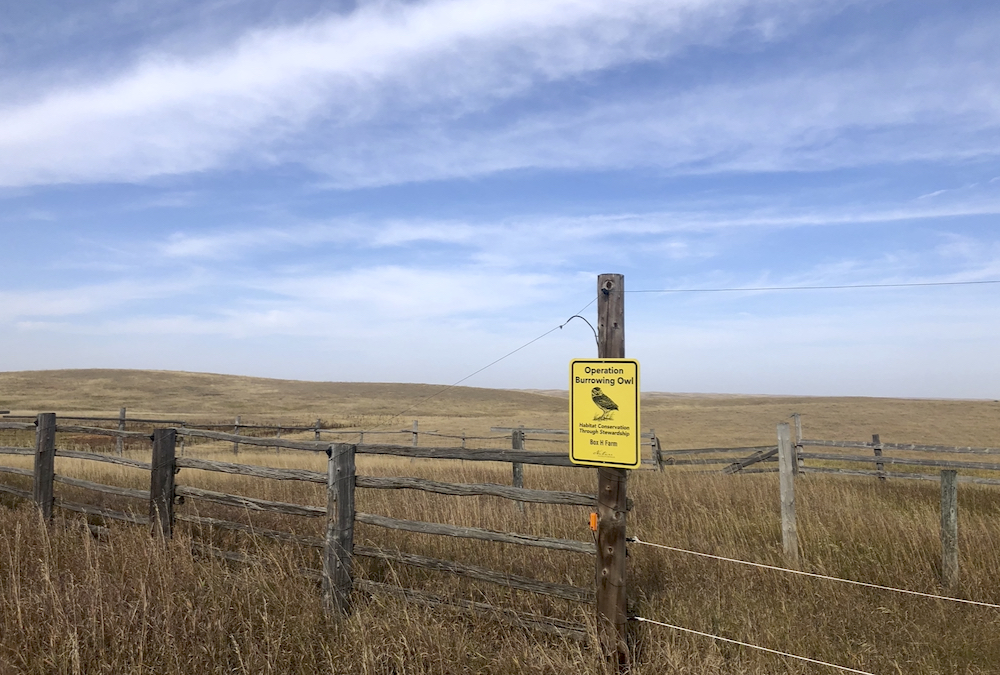
Mark says they graze for as long as possible — usually into January.
When they can’t graze anymore, Hoimyr says they keep a stockpile of grass for the remainder of the winter.
“Having that stockpile of grass in front of us is something that we really like. It’s kind of a feeling of comfort when things aren’t going the way that they’re supposed to.”
However, they haven’t been severely grazing for very long at Box H Ranch, and while the Hoimyrs wants to continue with severe grazing, there are still wrinkles they need to iron out.
“It’s been good overall so far, but every year is different. You just never know, so we’ll keep monitoring.”
Rest period
Mark says the rest period for severe grazing depends on the pasture and the types of grasses that may grow there.
For native pastures, they try to rest the pasture for 24 months. The rest of their pastures rest for 12 months, give or take.
Mark says they try to rotate their cattle every day or two. They use electric fence to divide a pasture into much smaller paddocks, which the cattle graze heavily before they are moved.
However, the Hoimyrs are still learning what works best for them.
“We are still well in the exploratory phase of what we need to do but we think our 12-month rest period is going to be sufficient for the tame forage, and maybe even a little less than that, depending on the growing season.”
He says once the cattle are done grazing one section and are moved onto the next, the grass looks terrible because of how severely it’s been grazed. But when given enough recovery time, they can see improvements in quality.
Allowing the grass to recover for a year affects not only the soil but the wildlife.
“In these big, rested areas that we’re not grazing in a year, we’re seeing a lot more wildlife — birds, insects, deer, all sorts of things — using that pasture. We’re not out there bothering them. And there’s lots of growth too,” Laura says.
Electric fence
During the bus ride to Box H Ranch, Mark gets on the microphone and expresses his love for electric fence, which he expounds upon once standing before his cattle.
“One thing that I can’t mention enough when it comes to the management of the land is the electric fencing. A few of you mentioned how much you hate barbed wire on the bus.”

Mark says electric fence makes rotational grazing more doable and easier.
“It is just such an amazing tool that allows us to control where the livestock are, where they’re not … it allows us the flexibility to be wrong over and over again and just keep changing it and making it closer to right. It’s a fantastic tool that is really underappreciated in the grazing world.”
Mark demonstrates this for the entire group, who, with cameras out, watch as he removes a line of electric fence. The cattle move towards the fresh grass, mooing the entire time.
Future
After only two years of severe grazing, the Hoimyrs intend to keep honing the method until it works perfectly for them while ensuring they’re not doing any damage during late-season grazing.
“We do have some concerns about the level of forage and the amount of cover that we’re leaving over winter,” he says. “So late-season grazing is something that we’re paying a lot of attention to. We have had some instances where we’ve grazed a little bit of alfalfa really late, even though it should have been dormant.”
Hoimyr says one of the main things they would like to look at is maintaining body condition in their cattle, which are getting less quality forage because of how severe grazing operates.
“Obviously they’re going to be getting less quality forage because we’re asking them to take all of it instead of their favourite or what tends to be the most nutritious, and that’s going to lower the overall nutritional value of their diet. And that is something that we’ve definitely seen, especially in certain classes of animals and younger and older animals.”


